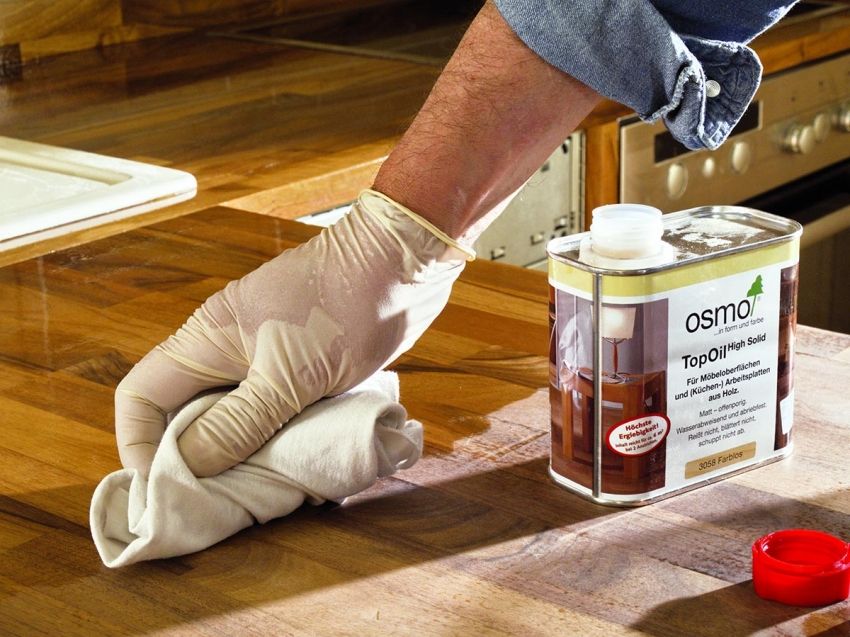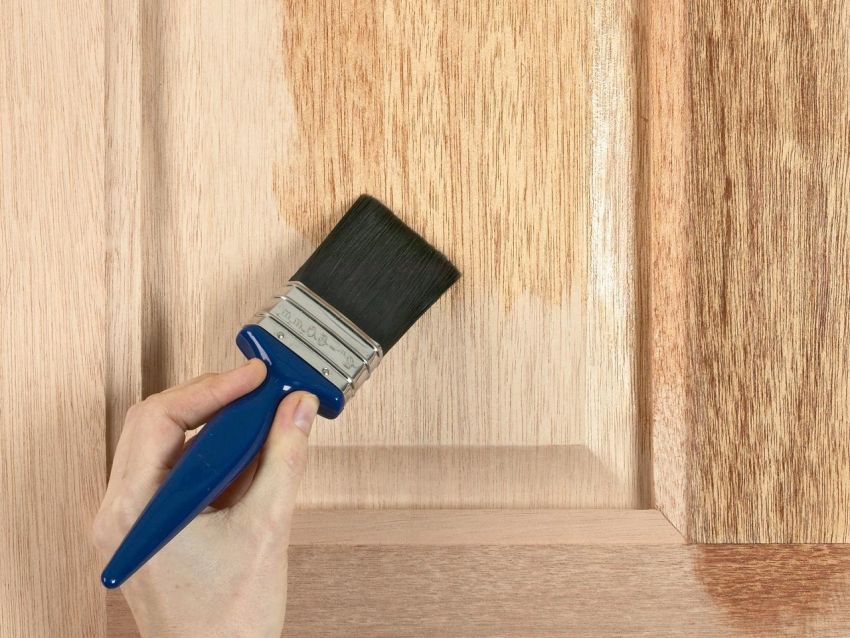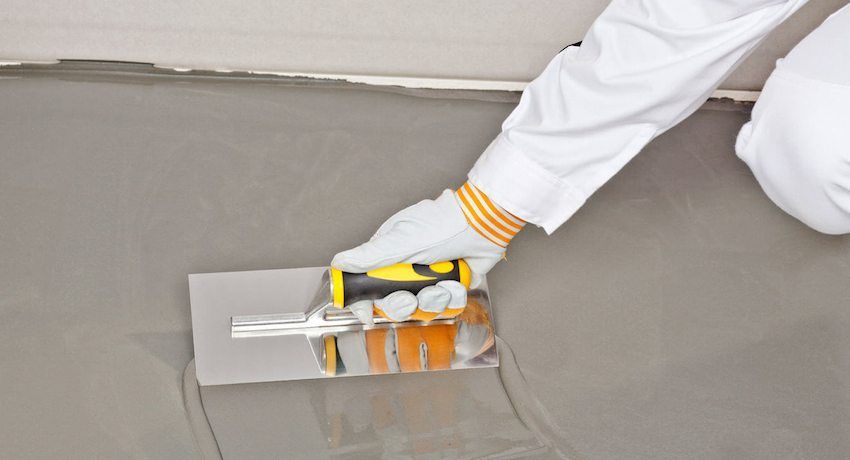From this article, you can learn all the advantages and nuances of such a finishing material, as paint on wood for odorless interior work. Consider in detail the main types of compositions intended for decoration of living rooms, their advantages and properties. The text also provides information on manufacturers popular in this category and average prices for their products.

Wood paint for indoor odorless: the specifics of the material
For interior decoration is often used staining method. Living rooms have specific requirements for the composition of dyes applied to surfaces. Since a person spends a lot of time in such rooms, it is important that the finishing materials dry quickly, have no smell and are environmentally friendly.

Fortunately, there are a lot of modern materials on the market that have the necessary properties. Thanks to them, painting work inside the house is carried out safely, comfortably and without toxic fumes.
It may seem that the choice of dye for residential premises is very simple. In fact, the quality result depends on many factors, including increased requirements for the characteristics of the composition and operating conditions of the room.
Selecting the appropriate type of dye for interior painting work, you should pay attention to the following parameters:
- coating durability;
- degree of resistance to moisture;
- ecological cleanliness;
- simplicity and accessibility of operation, as well as procedures for the maintenance of painted surfaces;
- the level of resistance to mechanical stress (abrasion, damage);
- Fire safety;
- the covering ability of the material;
- decorative properties.

Affordable price of quick-drying, odorless paint on wood is also one of the criteria that most buyers pay attention to. To choose the best option of finishing material, you need to make a general idea about all types of compositions, their features and properties, as well as advantages and disadvantages.
Note! Many manufacturers focus on the ease of working with a particular dye. For example, the function of a complete rust transformation is attributed to some dyes. But do not neglect the requirements for technology works with the composition and base material. Especially, it concerns the stage of surface preparation for painting. Therefore, it is recommended to thoroughly clean the base and perform other work, regardless of the properties declared by the manufacturer.
Being in the store, first of all you need to pay attention not to the characteristics declared by the manufacturer, but to the composition of the dye.

Most materials include the following components:
- pigment particles, giving the coating a certain shade;
- a binder that acts as a base element and forms a film coating on the surface to be treated;
- fillers, providing decorative properties, gloss and reliability;
- additional additives that give the coating special properties.
The special properties include fire safety, the ability to dry quickly. Some types of compounds, such as wood floor paints, wear-resistant. For finishing of internal surfaces various types of compositions are used: oil, acrylic, alkyd, etc. All of them have special properties and advantages.
To buy decorative paint for high quality walls you also need to consider the operating conditions of the room:
- climatic conditions of the building (increased moisture, the presence of heat or lack thereof);

- what type of wood the surface is made of (rock, base texture);
- what is the likelihood of a fire in the building (the presence of flammable objects and materials, as well as sources of fire, their remoteness and the degree of maintenance of fire safety requirements);
- is there an old coating on the surface (in some cases it may be necessary to remove the paint from the wall in advance or have to choose a suitable type of paint).
Also, the dye is selected according to expectations regarding decorative qualities, for example, the desired effect, texture, shade. In the palette of paints for the walls in the apartment, you can choose any color, and the coating can be matte, glossy, semi-gloss or structural.
Before the dyeing procedure, it is recommended to remove the old layer of paint from the surface. Especially this requirement applies to oil formulations that are completely incompatible with other types of coatings.

There are several ways to remove oil paint from the wall:
- Mechanical.
- Chemical.
- Temperature.
Important! It is not recommended to use the temperature method of removing coatings on wooden surfaces. Not every type of wood can withstand this type of impact. The exception is beech and oak, they are endowed with high strength characteristics.
There is no universal effective method for all cases, therefore experts recommend using all stages of work consistently. For starters, you can try to remove the paint layer with a conventional trowel. If the previous painting was carried out in compliance with all technological requirements, and a primer was applied to the surface, then the mechanical method will be quite enough. In conclusion, it will only be necessary to refine the base using sandpaper with an average grain size.

If the spatula does not help, in such cases you can use a grinder, which will significantly reduce the layer of the old coating. The surface is processed until the wood texture begins to appear. If this does not help, the wall is treated with a solvent or a special wash. The tool is chosen for the type of dye that needs to be removed. Only in this case, you can count on efficiency. At the end of the surface is cleaned with sandpaper.
Paints differ among themselves not only according to the type of base (binder), but also according to their purpose. A healthy microclimate in the room depends on how correct the choice is and whether the coating can meet the expectations.
To preserve the natural texture can not do without the use of wood varnish for interior work. These transparent compositions highlight the natural beauty of the woody pattern. Environmentally friendly water-based dyes will help to give the necessary shade to the surfaces.

This type of composition can be used to process the following objects:
- plinth;
- floors;
- panels;
- doors;
- windows and frames;
- slopes;
- furniture.
If the building is completely made of timber and there is no possibility to cover the surfaces with the help of another finishing material, it is better to use acrylic paint for wood for interior work. This type of coating is able to visually mask the irregularities and errors on the walls, as well as to ensure high throughput. Thanks to the access of air to wood, living spaces remain comfortable and dry. Acrylic paint can be used to finish imitation beams.

For children’s rooms, it is better to choose easily washable acrylic-based paint, which can be completely painted on the walls or created using a stencil. The composition should be checked very carefully, because the presence of harmful substances will negatively affect the health of the child. Therefore, you should take a thorough approach to the solution of the question, what colors paint on the walls of children’s rooms.
Helpful advice! The label Eco Label is labeled environmentally friendly products. Dyes with this label can be safely used to finish the child’s room.
Acrylic and latex compositions are suitable for bathrooms and kitchens, as well as rubber floor paint on wood. The main thing is that they contain antifungal components. For kitchens, it is preferable to choose mixtures that form a coating that is distinguished by ease of care. It is desirable that grease stains and dirt be easily washed off from its surface.
Such premises as the hallway and the corridor are characterized by high traffic. Therefore, all surfaces are subject to severe mechanical stress. For their finishing, it is recommended to use acrylate-latex compounds with abrasion resistance.

Household premises in homes also need care. As a finishing material, it is better to use dyes of the budget category, for example, vinyl or acrylic paints for wood for interior use. In zones where washing or drying of linen is carried out, the same compositions are applied as for kitchens and bathrooms.
| Name | The brand | price, rub. |
| Super white matt (dry rooms) | Optimist | 720 |
| Super White Matte Latex Base | 960 | |
| Superwhite matte latex-based (moisture resistant) | 790 | |
| Super White Matte Super washable | 1250 | |
| Latex based energy | Snowball | 200 |
| Classic matte | 250 | |
| Max washable latex-based | 250 | |
| Stains-Stains | 300 |
All listed in the article dyes are made on the basis of environmentally friendly raw materials. Before painting the room, you should pay attention to which paints do not have an unpleasant odor and have a wide range of colors. With the help of such compounds, you can not only experiment with the design, but also get a beautiful, reliable coating that protects wooden surfaces from mechanical loads, as well as the negative effects of moisture and microorganisms.
